How making a newspaper helped an indie record shop find its voice
The first issue of Deluxe was, in Rupert Morrison’s words, “lumpy.” He’s the owner of Drift, an award-winning record shop in Totnes – not...
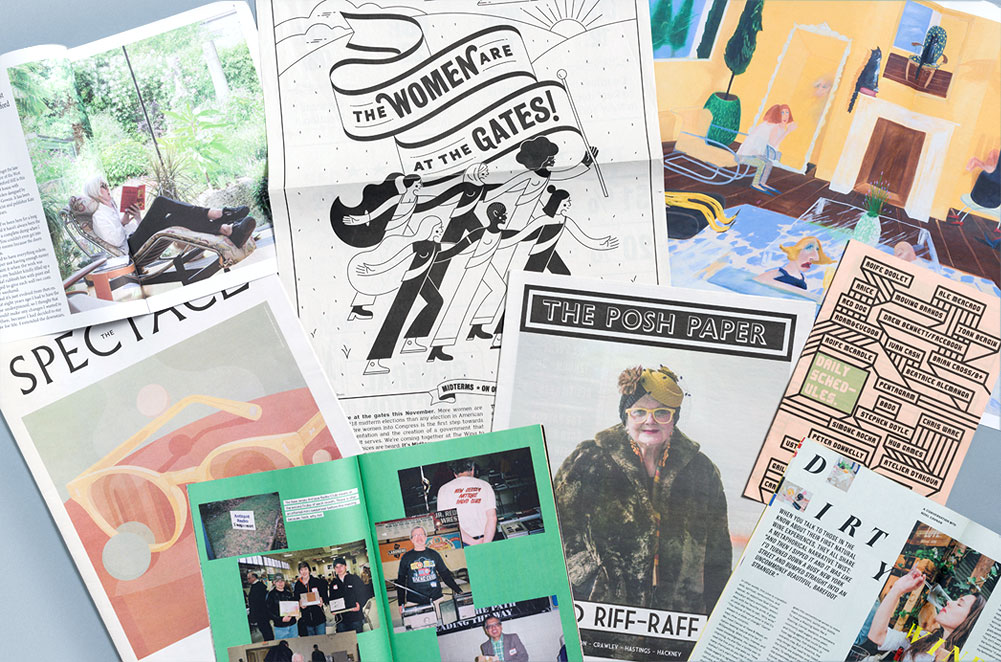
10,000. That’s how many ads the average person can encounter in a day, according to Forbes.
If your brand isn’t doing something to cut through that clutter, you’ll only stand a one in 10,000 chance of breaking through.
But what if there were an alternative that could help brands penetrate this noise?
It turns out: There is. Newspapers offer a different way to connect because the print experience provides an immediacy to your content that digital marketing just can’t replicate.
Journalist Andrew Ferguson wrote about his experience subscribing to a physical newspaper for The Atlantic, noting that the tactile experience has become a novelty again: “[Print] exposes serious advantages over my previous news diet of phone and laptop...My newspaper could never be so noisy or presumptuous. It holds still,” he writes.
A newspaper about your brand can capture customers’ attention in a similar way. It will serve as a unique canvas for your stories, community content, and customer engagement. And something about newspapers feels more personal in the 21st century, meaning you won’t just add to the noise. You’ll stand a real chance at connecting.
Here’s why (and how) to do it.
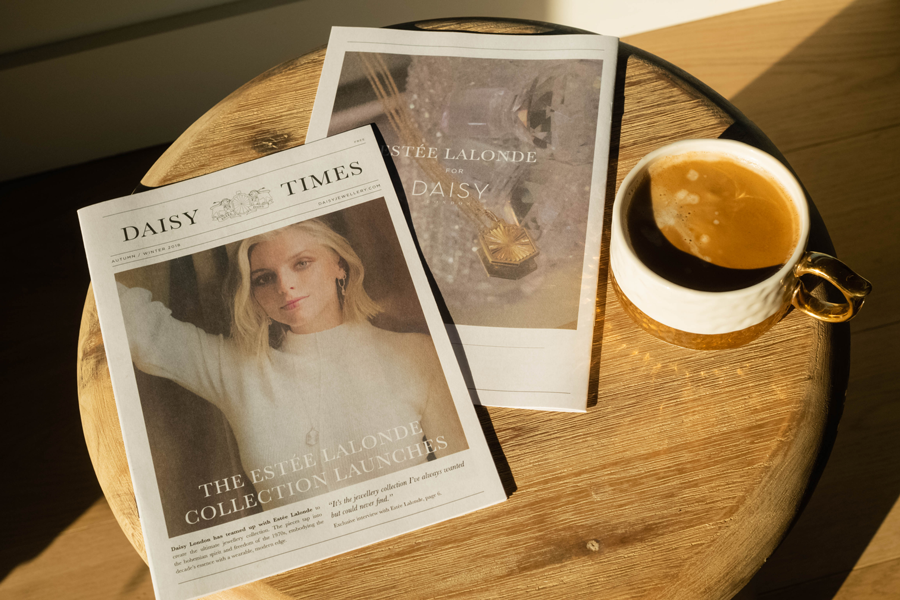
More brands are beginning to see how having a branded newspaper is a competitive advantage: When they ship a product, including inspirational, contextual content is a special bonus for the customer. And by including informative interviews, customer features, and user-submitted content, a custom newspaper provides “hooks” that make your brand feel more personal and immediate.
Let’s look in more detail at some of the reasons brands are turning to newspapers as a way to further connect with customers.
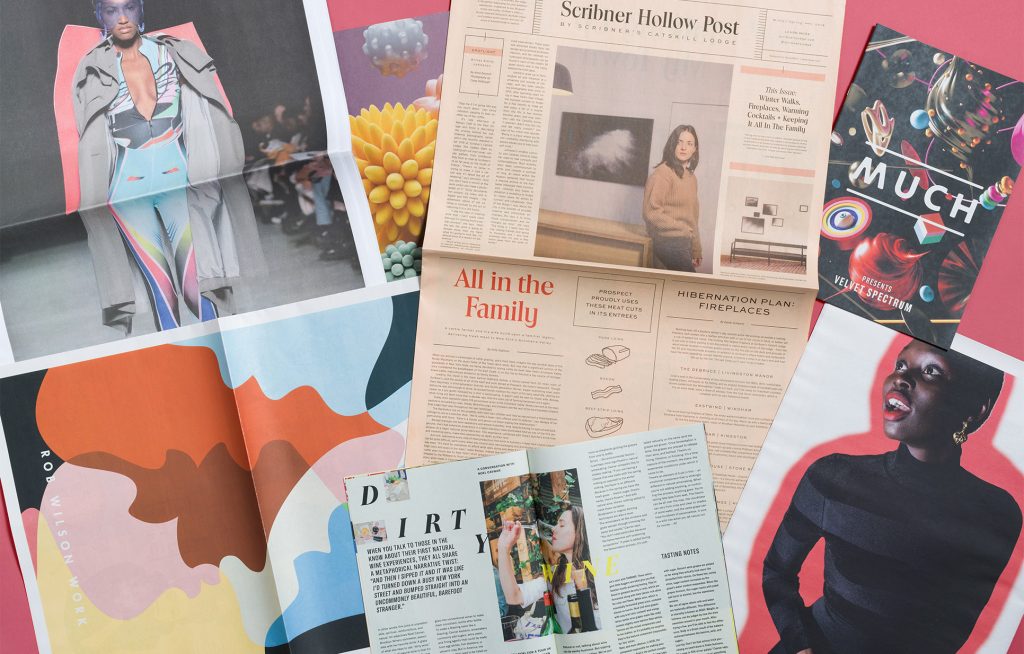
Storytelling is essential to building customer relationships. The more customers understand your brand and what it stands for, the deeper your bond and connection with them will be. Newspapers present a place for you to tell those brand stories that drive long-term loyalty — without breaking the bank. Modern technology has made self-published newspapers far more flexible and cost-effective than ever before.
This is especially true when you use Newspaper Club. With no minimum order, you can try out a newspaper with no long-term commitment. Plus, it’s flexible: There’s the option to print from four to 64 pages as your content expands, as well as three different printing sizes (mini, tabloid, and broadsheet) and a variety of different papers — and delivery costs are built into the price.
In short, you don’t have to have a large marketing budget to make your own newspaper these days.
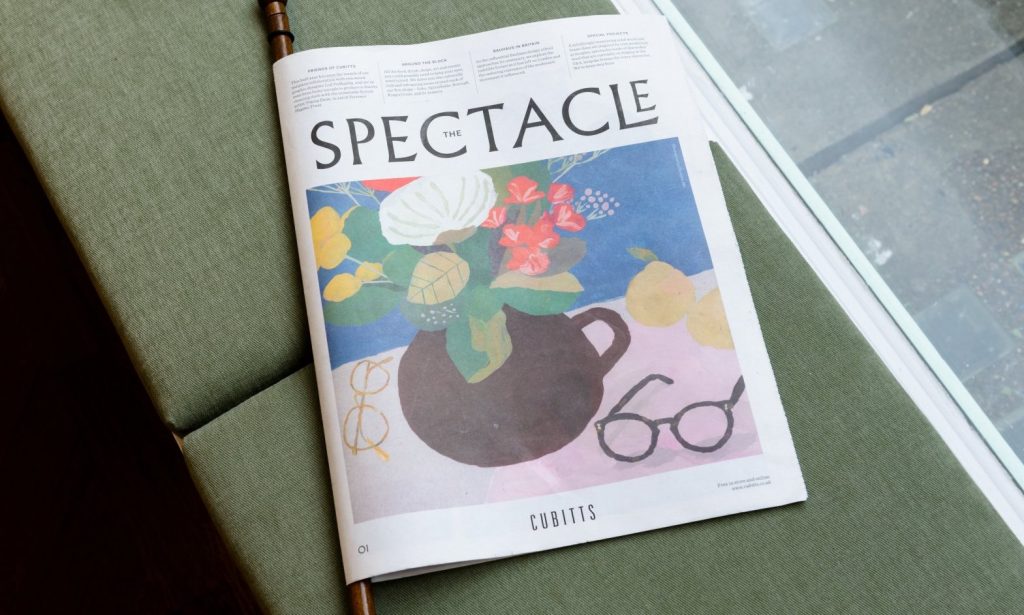
Companies want to create a sense of community with their audiences, oftentimes they just don’t know how. With a custom newspaper, you can start building a community by pulling back the curtain on your business and bringing readers behind the scenes at your company — no matter the product.
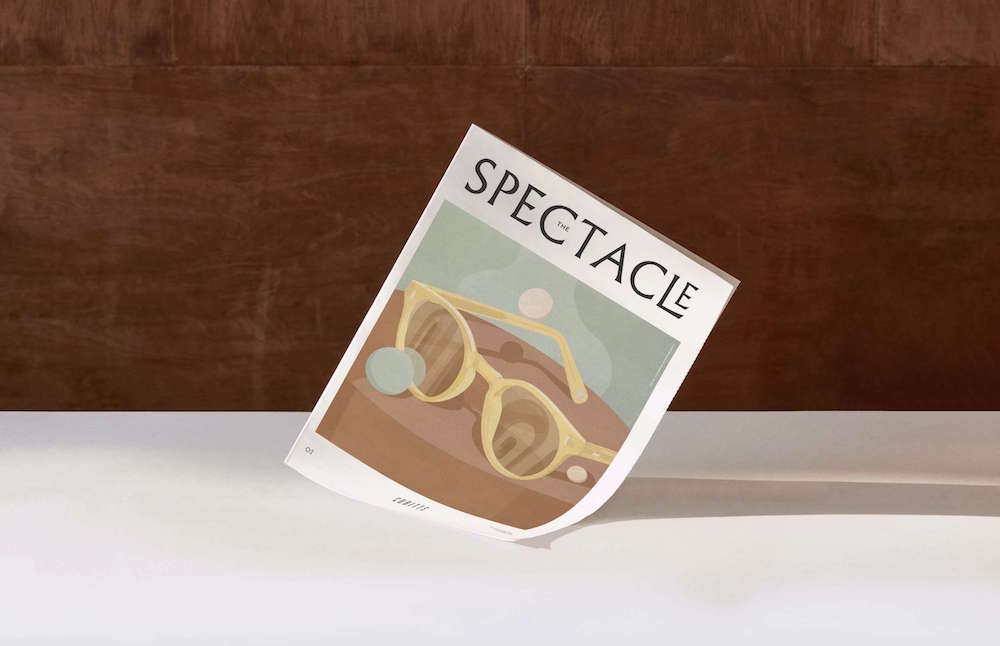
Consider the example of the London-based eyewear brand Cubitts and their newspaper, The Spectacle (pictured above). Selling glasses might at first seem like a difficult topic to write about in a newspaper. How do you create a sense of community around a product like eyeglasses? The Spectacle, which customers can read while waiting for their eye exams, answered that question in its first issue with the following:
This newspaper speaks to the interests of Cubitts’ customers and shows some brand personality, too. The first issue of The Spectacle had 32 pages — chances are, your brand has just as much to say. There’s also an opportunity for brands to work on community-building by encouraging customers to include the brand’s newspapers in user-generated content, like photos.
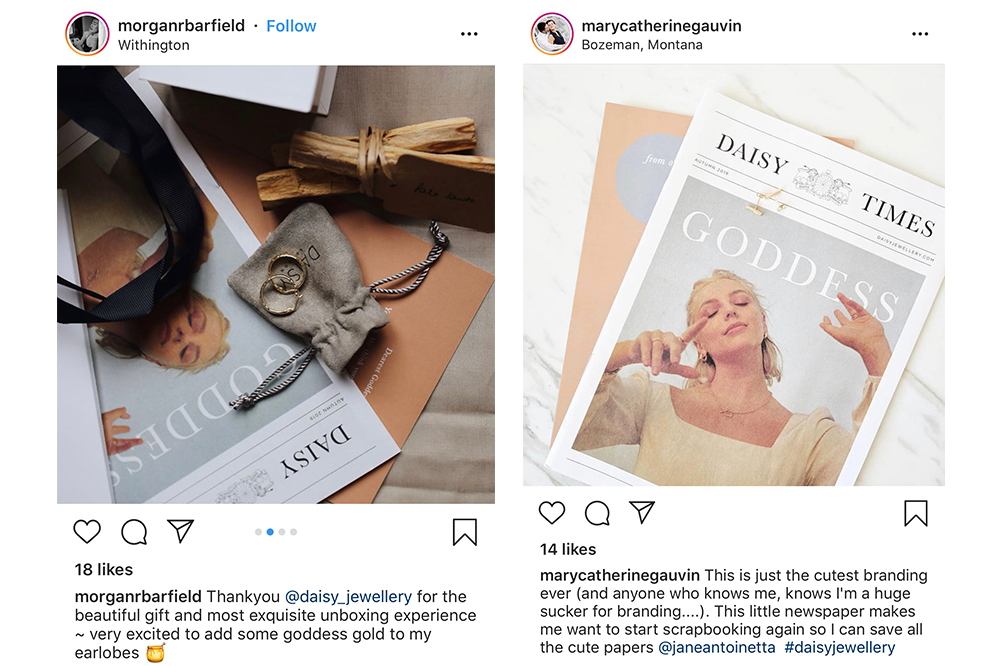
Jewellery company Daisy Jewellery has followed this path, and today, their customers use the brand’s newspaper, The Daisy Times (pictured above and below), as backdrops in Instagram photos of their jewellery — which reinforces their branding and unites customers.

With newspapers, brands have a place to tell long-form stories that reinforce brand values — and these can be tucked into each and every order that ships out.
Don’t think your market lends itself to long-form stories? You might be surprised. As Meghan McCarron recently noted at Eater, even artisanal food products can “live or die by clarity of their message. And so a select few choose to tell their stories through small, personal, quirky paper publications.”

Wines That Deliver, a small wine business based in California, has seen this work well. Their newspaper (pictured above) is not only about wine; it’s also about the history of the brand and the lifestyle that good winemaking evokes — which align with the interests of their customers.
Alongside information about their wines are illustrations by founder Patrick McNeil’s grandfather, who had a 50-year career drawing labels for wines and liquor.
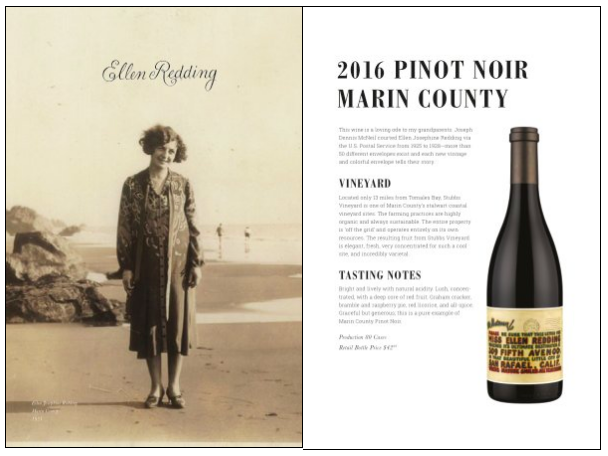
“Our newspaper has been the perfect medium to capture the tone and character of my grandfather’s artwork, which spanned the years between 1925 and1975,” said McNeil. “Today, Wines That Deliver conveys this artful story through original, archived artwork and a nod to the days when actual delivery of products and newspapers to your door was a valued service.”
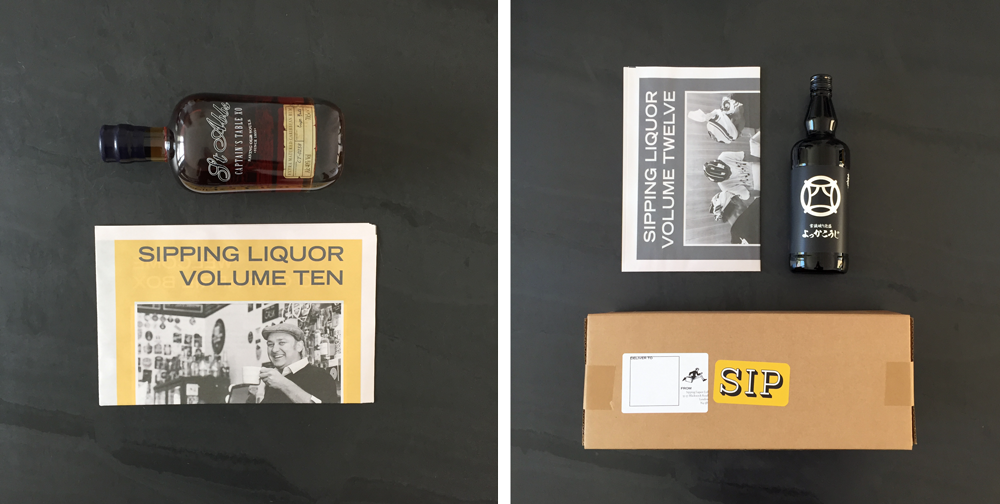
Customers are looking for informative content that tells them about what went into the product they’ve purchased and what happens behind the scenes.
Sipping Liquor, a craft spirits subscription club, is one brand doing just that. With their subscriptions, they include a newspaper (pictured above) that features interviews with different employees at their distillery as well as photos of the actual people who made the product. “We chose newsprint because it's distinctive and gives us a large canvas to play with different designs,” says founder Andrew Rummer. “We've received great feedback from customers after the past three magazines.”
Customers wanted to know what went into the product, and Sipping Liquor has built a newspaper around answering those questions.

If sustainability is one of your core values, newspapers present a solid option when it comes to print materials. Newspapers are an intrinsically lower carbon product than standard magazines, as they require far less energy for paper production, printing, finishing, and transport.
Newspaper Club’s different paper types are either recycled or sourced from sustainably managed forests (all of which have met a strict set of environmental and socially responsible standards.) All of the materials and packaging are 100% recyclable and biodegradable, too. What’s more: Newspaper Club’s printing press is powered in part by solar panels — about 25% of its energy is solar-generated.
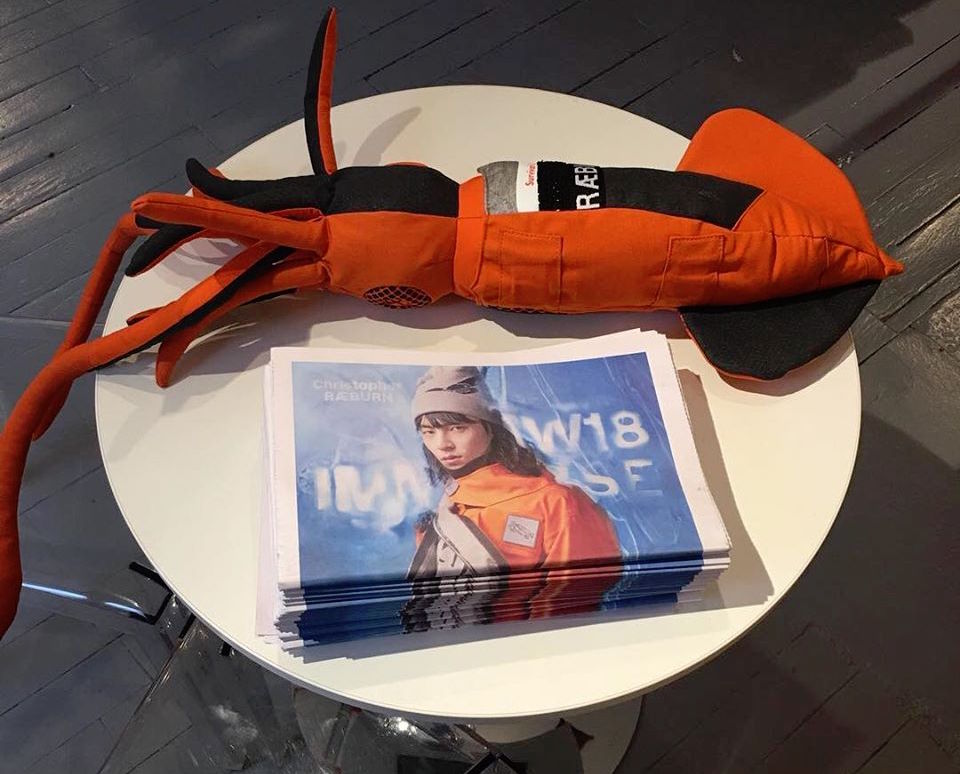
Brands are already seeing how this approach fits within their sustainability frameworks. British fashion label Christopher Raeburn, for example, is well known for its use of recycled materials in clothing. In the recent REMADE collection — showcased in a newsprint lookbook — Christopher Raeburn incorporated repurposed military fabrics. In a collaboration with Timberland, they sourced vintage items from thrift stores.
A brand like that is bound to seek sustainability in its print materials as well. At Newspaper Club, you can choose options like recycled newsprint to ensure that your brand’s print materials are in line with a core value like sustainability.
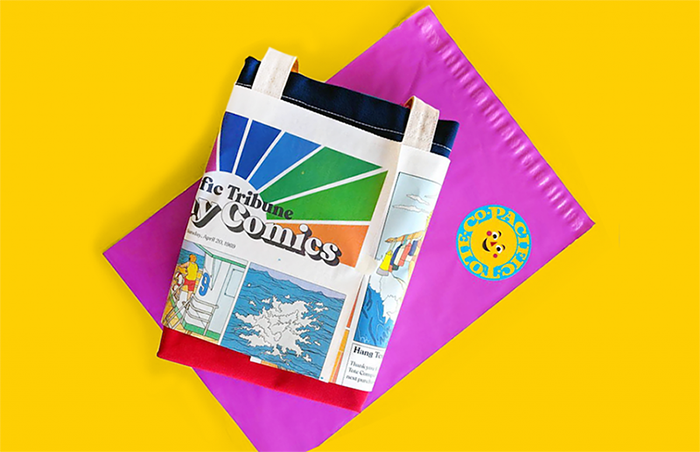
As Jesse Genet of packaging company Lumi points out: “If you think of your eCommerce packaging as a storefront, then you should think of your printed collateral as a helpful, welcoming store clerk.”
You can use your newspapers and print collateral to:

With Newspaper Club, you’ll have access to fast shipping, friendly support, and flexible print runs for your initial newspapers.
Bonus: You can ship newspapers anywhere in the world, so it's ideal for overseas offices, trade shows, and more. Order your free samples and see what you can make today.
This article was written by Kaleigh Moore, a freelance writer covering retail and direct to consumer brands and specialising in blog content.
Print your own newspaper with Newspaper Club.
The first issue of Deluxe was, in Rupert Morrison’s words, “lumpy.” He’s the owner of Drift, an award-winning record shop in Totnes – not...
Spring is in the air and a new season of print is upon us! In this roundup, we've got a creative pick-me-up from Papier, a peek behind...
As Newspaper Club’s digital product manager, Billy Whitehouse spends his days helping others bring their print ideas to life. But...